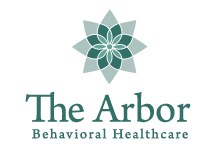You don’t know it, Jeffrey Kluger says in TIME Magazine’s Special Edition: Mental Health, but “you spend your life just an inch from madness.” He explains that if you have a broken leg, you know your leg is broken. But when it comes to mental health, the fine line is a bit murkier. “At what point does joy turn into mania, sadness becomes depression, apprehension becomes anxiety, fear become a phobia? We value imagination but not a hallucination,” he continues. “Yet they’re close kin.” It’s difficult to walk the line, but the Diagnostic and Statistical Manual of Mental Disorders (DSM) is there for a reason. Written by the American Psychiatric Association, there are diagnostic criteria for just about any mental illness you can think of, and even some you can’t. Continue reading to learn more about when a feeling becomes an illness.
It’s a Natural Process…Until It Isn’t
Everyone has days where the sun is shining and so are we. We feel joy and are able to help others feel joy, too. In contrast, there are days when the sun is shining but we are not. We are unable to complete daily tasks that we normally would be able to do, let alone feel joy. “The cycling of bad days and good days, darker seasons and brighter seasons, is simply part of the natural process. Until it’s not,” Kluger explains. “For some unlucky people, weather becomes climate; the dark-light cycle becomes stuck in the dark. Every day seems to bring a new emotional cyclone, the only difference being one of severity.” This change from a day-storm to a climate change happens far more often than we think — 1 in 5 Americans deal with a mental illness. The more awareness is raised, the more likely the stigma will be broken down. This means fewer people will suffer. That’s a good thing.
When Does Feeling Become an Illness?
So, when can we say that a feeling becomes an illness? It may seem complicated and blurry, but there’s a line. Below are the diagnostic criteria, from the DSM-V, for depression, anxiety, and substance use disorder.
Major Depressive Disorder Diagnostic Criteria
There must be five or more symptoms present for a two-week period, with at least one of the symptoms being number one or number two. These five or more symptoms must cause the individual clinically significant distress or impairment in functioning. The symptoms must also not be a result of substance abuse or another medical condition.
- “Depressed mood most of the day, nearly every day.
- Markedly diminished interest or pleasure in all, or almost all, activities most of the day, nearly every day.
- Significant weight loss when not dieting or weight gain, or decrease or increase in appetite nearly every day.
- A slowing down of thought and a reduction of physical movement (observable by others, not merely subjective feelings of restlessness or being slowed down).
- Fatigue or loss of energy nearly every day.
- Feelings of worthlessness or excessive or inappropriate guilt nearly every day.
- Diminished ability to think or concentrate, or indecisiveness, nearly every day.
- Recurrent thoughts of death, recurrent suicidal ideation without a specific plan, or a suicide attempt or a specific plan for committing suicide.”
Generalized Anxiety Disorder
- “Excessive anxiety and worry occurring more days than not for at least six months about a number of events or activities.
- The individual finds it difficult to control the worry.
- The anxiety and worry are associated with three (or more) of the following six symptoms, with at least some symptoms having been present for more days than not for the past six months:
- Restlessness, feeling keyed up or on edge.
- Being easily fatigued.
- Difficulty concentrating or mind going blank.
- Irritability.
- Muscle tension.
- Sleep disturbance
- The anxiety, worry, or physical symptoms cause clinically significant distress or impairment in social, occupational, or other important areas of functioning.
- The disturbance is not attributable to the physiological effects of a substance or another medical condition.
- The disturbance is not better explained by another medical disorder.”
Substance Use Disorder
How severe your substance use disorder depends on how many symptoms are identified. Two or three symptoms indicate a mild substance use disorder; four or five symptoms indicate a moderate substance use disorder, and six or more symptoms indicate a severe substance use disorder.
- “Taking the substance in larger amounts or for longer than you’re meant to.
- Wanting to cut down or stop using the substance but not managing to.
- Spending a lot of time getting, using, or recovering from use of the substance.
- Cravings and urges to use the substance.
- Not managing to do what you should at work, home, or school because of substance use.
- Continuing to use, even when it causes problems in relationships.
- Giving up important social, occupational, or recreational activities because of substance use.
- Using substances again and again, even when it puts you in danger.
- Continuing to use, even when you know you have a physical or psychological problem that could have been caused or made worse by the substance.
- Needing more of the substance to get the effect you want (tolerance).
- Development of withdrawal symptoms, which can be relieved by taking more of the substance.”
If you find yourself relating to any of these disorders, call Arbor Behavioral Healthcare today. We can get you the help you need. Call now at 844-413-2690. We can’t wait to hear from you.


